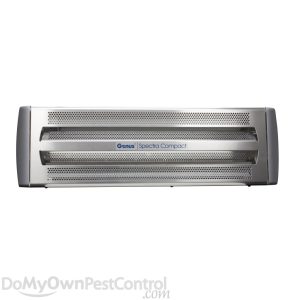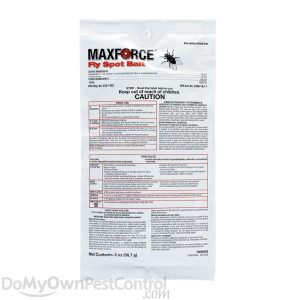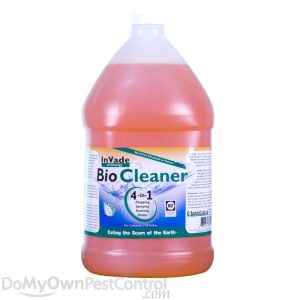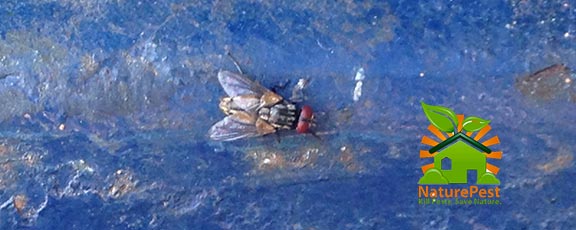How do I get rid of flies in my house, these flies cause annoyance and discomfort, and are considered a health risk to people and pets.
How Do I Get Rid Of Flies In My House
There are several species of nonbiting flies also known as nuisance flies found around farms, residences, and food-handling establishments.
House Fly Biology
In order to get rid of house flies, you have to know how they breed and behave in order to be able to control them. A chemical approach to controlling house flies will be futile if you fail to understand their mating, feeding and life cycle otherwise known as house fly biology.
Filth flies life cycle includes egg, larva (maggot), pupa, and adult.
Adult flies have 2 major wings and 2 reduced wings. The 2 reduced wings are knob-shaped balancing organs.
Filth flies are usually scavengers and many are capable of transmitting diseases to humans.
Filth flies can usually be grouped according to their habits and appearance as houseflies and their relatives.
Flesh flies
Blow flies
Bottle flies
Eye Gnat
Filter flies
Humpbacked Fly
Screwworm Fly
Soldier flies
Vinegar (fruit) flies.
House Flies Breeding Habits
House flies are one of the most common of all insects. Its distribution is worldwide and is a common pest in homes, barns, poultry houses, food handling facilities, dairies, and recreation areas.
Its breeding potential is enormous, and during the warmer months can produce a generation in less than 2 weeks.
In many in warm tropical and sub tropical areas such as Florida, house flies breed all year long.
House flies can lay their eggs in almost any type of warm organic material.
Animal or poultry manure are excellent breeding mediums. Fermenting vegetation like grass clippings and garbage can also provide a great medium for fly breeding.
House flies lay whitish eggs in clusters of 75 to 100 and they hatch within 24 hours into tiny larvae, also known as maggots.
In about 4 to 6 days the house fly larvae will migrate to the drier portions of the breeding medium and pupate.
The house fly pupa stage may vary in length but in warm weather can be about 3 days.
When the adult house fly emerges from the pupal case, or puparium, the wings are folded in tight pads.
The house fly crawls around rapidly while the wings unfold and the body dries and hardens.
Under normal conditions, this may take as little as an hour. Mating occurs immediately.
A house fly may go through a complete life cycle from egg, larva, pupa to winged adult from 6 to 10 days under warm humid conditions.
An adult house flies live an average of 30 days.
During warm weather house flies can have 2 or more generations may be produced per month that means that one house fly can produce as many as 200 flies in one month.
Because house flies develop at such a rapid rate and the large numbers of eggs that house fly females produce large populations build up quickly.
House flies are abundant in the immediate area of their breeding sites. Under some conditions, they may travel 1 to 4 miles but are usually limited to 1.5 to 2 miles. House flies are strong fliers and can be distributed by flying, wind currents, vehicles, and animals.
House Fly Feeding Habits
House flies feed through a straw like sponging-type mouthparts. As house flies move about from one food source to another, it samples and eats its food by regurgitating liquid and dropping it on the food to liquefy it.
The house fly’s feeding and breeding habits, along with its persistence for invading homes, business and feeding on human food, enables the house flies to spread gastrointestinal diseases such as dysentery and diarrhea.
Natural House Fly Control
It is important that if you have pets that you pick up their feces to reduce house flies breeding on their feces. If you have trees that produce fruit you should pick up and all fallen fruit and dispose of any bad or damaged fruit on the ground.
Trash containers should have lids that seal tightly around the container.
Make sure your doors have good tight seals and that all windows have screens in good conditions repair all screens that damaged or with small wholes and tears or are bent out of frame as to prevent house flies from entering your property.
Avoid leaving pet food out for long periods of time where flies can feed and breed on the rotting food.
Keep all foods outside in sealed containers.
Eliminate water sources around your property.
Pick up all lawn debris where it can decompose and flies can breed in it.
In commercial buildings, pressure cleaning the dumpster site on a regular basis to remove decomposed matter build up is vital to house fly control, using a biological cleaner like Invade Bio Cleaner will go a long way in controlling the breeding of house flies.
Bellow are the same products we use in our residential and commercial fly control programs, there are links to a supplier that offers free shipping with these products.
Professional Tools For Controlling House Flies
For interior home and office house fly control
Flyweb Fly Light

The FlyWeb fly light with a compact design insect light trap for indoors that plugs directly into a standard electrical outlet, bringing high-tech and effective fly control right to your home, office or restaurant. The FlyWeb lamp uses an insect attracting light to lure insects into a glue board that traps the unsuspecting pests. It uses replaceable and disposable glue boards. The FlyWeb fly light traps house flies, fruit flies, cluster flies, phorid flies, bottle flies, drain flies, mosquitoes, gnats and more. It measures 3.5″ wide x 11″ high and uses a standard 110V plug-in compatible with any outlet. Each flylight comes with a light bulb(s) and one glue board(s) already installed.
EndZone Insecticide Sticker

The EndZone Insecticide Sticker by FMC is used for the knockdown of the following filth flies: little house flies, house flies, bottle flies, blow flies, phorid flies, flesh flies, fungus gnats, and vinegar/fruit flies. There are no vapors or fumes released into the air. The product features a bittering agent to prevent accidental ingestion by children or pets. Each sticker has a coating that is attractive to listed filth flies. After the flies ingest the coating, they die within 1 minute. The flies will usually die underneath the sticker and dead flies do not stick to EndZone Insecticide Sticker. Easily remove the dead flies using a vacuum or broom. Simply place a sticker near the filth fly resting, feeding, and breeding sites. The application is easy stickers may be placed in kitchens, commercial trash areas, and food storage areas.
Insecticide Sticker can be used near light sources, on windows, and other surfaces where these flies congregate. They can also adhere to the inside and outside of fly lights or light traps as well as fly bait stations. This Endzone Insecticide Sticker can be used with a catch basin, just be sure to remove any dead flies on a routine basis. Be sure to place the stickers in areas where they will not get wet and keep them dry after application. How many EndZone Insecticide Sticker should be based on the area and size of where the flies are found. The use of one sticker per 1000 cubic feet of space is the recommendation. More stickers are used for heavy infestations. Place one sticker per window for quicker results or in rooms with high infestations. Stickers should be replaced indoors after 7 months and outdoors after 4 months or on an as needed basis. Replace EndZone Insecticide Sticker stickers more often when contaminated by filth, dust, dirt, and etc. Keep out of reach of children and pets.

The Genus Spectra Compact is designed for high UVa output to optimise flying insect catch rates. Increasing customer awareness has led to a demand for higher levels of hygiene and food safety. The Genus Spectra fly lamps feature uniquely positioned bulbs to maximize the UVa output and ensure flies head unobstructed, straight for the discreetly placed Universal Glue Board. Finished with an attractively and discrete design, hinged screen panel, Uses Universal Glue Boards, and replacement bulbs are the Vector Plasma 36 watt. Each fly light comes with a light bulb(s) and one glue board(s) already installed.
Exterior Home and Business House fly Control
Maxforce Fly Spot Bait

Maxforce Fly Spot Bait kills flies in 60 seconds or less. Plus, Maxforce Fly Spot Bait is an easy to use and simply mix bait it can be used with one pint of water in a sprayer, and spray surfaces near the fly infestation. House Flies will be attracted to the bait and die within 60 seconds. A small spot has up to a 6-week residual to control future intruders. It is labeled for use inside and outside commercial establishments and outside residential properties. One envelope is 2 oz. and makes 1 pint of finished solution that will treat up to 125 sq. ft. Great for treating around dumpster bins and other areas flies are breeding.
Cleaners to control house fly breeding on commercial sites
Invade Bio Cleaner

InVade Bio Cleaner is a new formulation of modern cleaning agents that do not contain any chemicals or odors. It is primarily used for mopping floors, foaming drain pipes to remove organic material that creates a food source for roaches, and filth flies, and spraying treatment. It is a premium natural, odor eliminating and waste digesting microbes product. InVade Bio Cleaner is safe to use in foamers, manual spray applicators, powers sprayers, mop and hose end sprayer applications. It can be used in a variety of areas like restrooms, public showers, grease traps collection pits, etc. The InVade Bio Cleaner works perfectly in cracks and crevices. It effectively eliminates organic build up and odors naturally. It is a 4-in-1 cleaning agent that does not leave any harmful chemicals and odors behind after cleaning so its perfect for commercial kitchens and other food preparation areas.
Sources:








